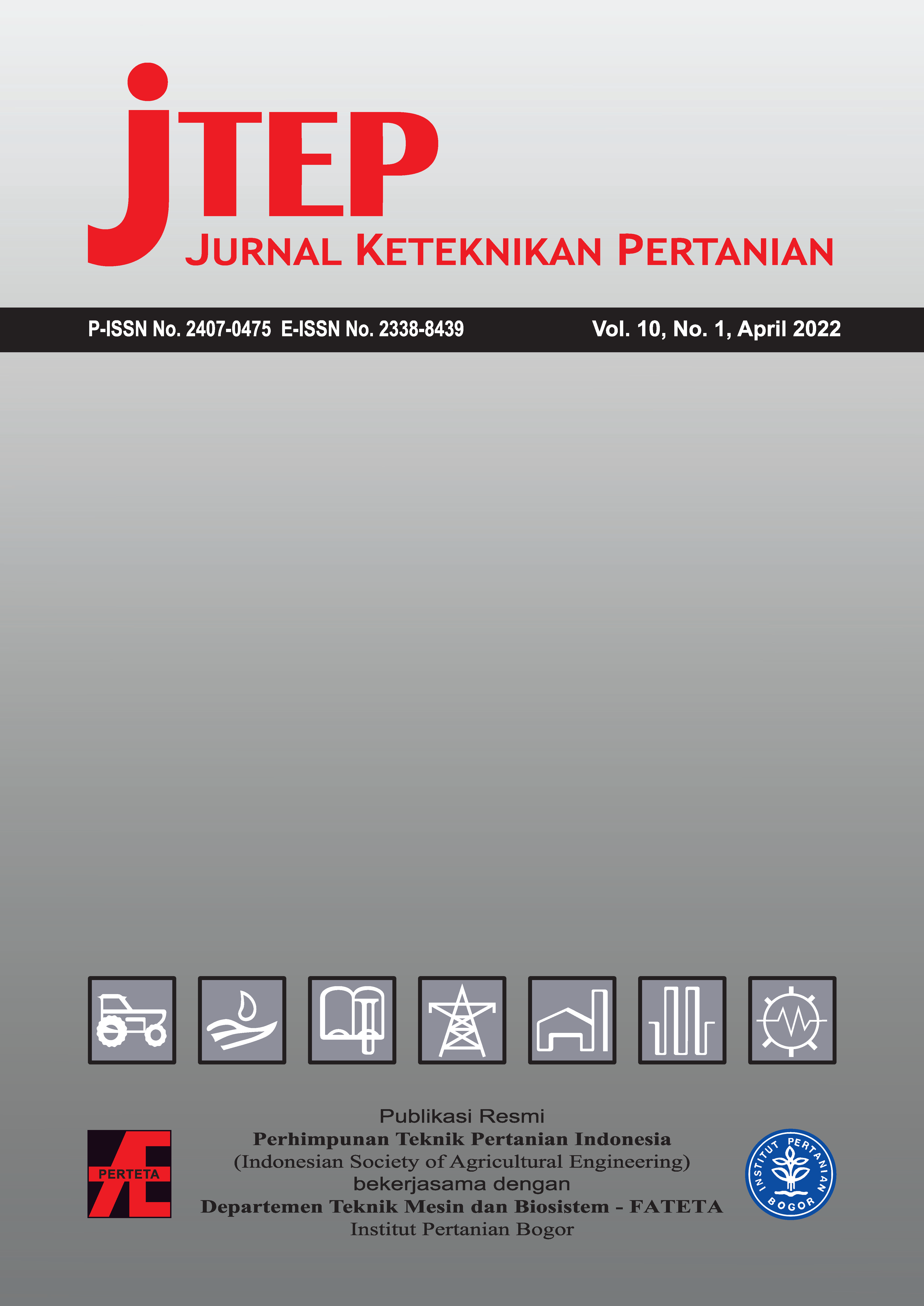Analisis Orifice pada Reaktor Biodiesel Sistem Kavitasi Hidrodinamik dengan Computational Fluid Dynamics
Abstract
Reactor technology for the trans-esterification process of vegetable oils or animal fats with methanol has been widely developed to obtain biodiesel products that comply with standards and at the lowest cost. The hydrodynamic cavitation reactor with orifice type is a choice for this purpose. Therefore, this study aims to determine the optimal orifice design from several types tested through CFD simulation. Furthermore, the simulation and experimental methods were used. The computer simulations performed on orifices A (2 holes with a diameter of 2 mm), B (4 holes with a diameter of 1.5 mm), C (9 holes with a diameter of 1 mm), and D (37 holes with a diameter of 0.5 mm) using the Schnerr and Sauer models showed that orifice C was optimal for cavitation at an absolute inlet pressure of 3x105 N/m2 with the use of methanol as fluid. The parameters studied in the computer simulation include velocity, pressure, turbulent kinetic energy, and vapor volume fraction. At the absolute inlet pressure of 3x105 N/m2, the maximum speed was 28.69 m/s, the minimum pressure was 12,266 N/m2, the maximum vapor volume fraction was 0.98, and the maximum turbulent kinetic energy was 12.75 m2/s2. The simulation results were compared with experiments conducted on a hydrodynamic cavitation reactor using orifices C and D. Also, measurements of the velocity and pressure parameters showed that there were no significant deviations between the results of the computer simulation and the experiment.
Authors

This work is licensed under a Creative Commons Attribution 4.0 International License.
Authors submitting manuscripts should understand and agree that copyright of manuscripts of the article shall be assigned/transferred to Jurnal Keteknikan Pertanian. This work is licensed under a Creative Commons Attribution-ShareAlike 4.0 International License (CC BY-SA) where Authors and Readers can copy and redistribute the material in any medium or format, as well as remix, transform, and build upon the material for any purpose, but they must give appropriate credit (cite to the article or content), provide a link to the license, and indicate if changes were made. If you remix, transform, or build upon the material, you must distribute your contributions under the same license as the original.

